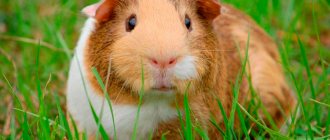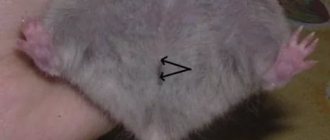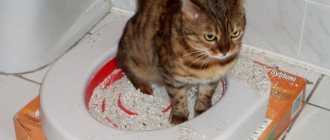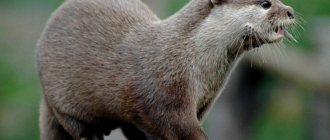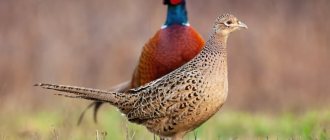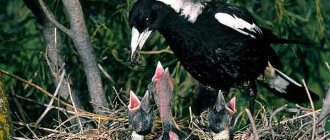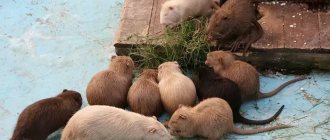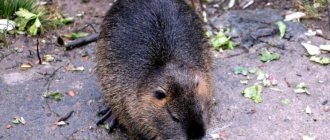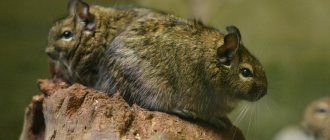Stick insects are one of the most exotic insects that are kept and reproduced at home. Stick insects live mainly in the tropics or subtropics. They are unpretentious in keeping, do not require much space, eat plant foods, do not bite, do not smell, and do not try to escape. Aren't they wonderful pets?
Annamese stick insect (Medauroidea extradentata)
To date, about 3,100 species have been described. Stick insects get their name because of their unusual appearance, resembling sticks, leaves, flowers, moss, etc., everything that these insects depend on for survival in the local environment. Being in a protective position, stick insects fall into a state of catalepsy, during which they remain motionless for a long time; at this moment you can do whatever you want with them.
Species diversity
The world of stick insects is much more diverse than it might seem to anyone interested in these insects - scientists have counted more than three thousand species of stick insects, 3 species are on the verge of extinction.
- The world's largest stick insect reaches a length of 60 cm and at the same time is the longest insect in the world!
- Another no less amazing species that lives both in the wild and among breeders is the Leafworm. From the name their interesting body shape is clear, disguising them as their natural habitat - tropical latitudes. Although leaf beetles do not look like stick insects, they all belong to the order of ghosts.
- A stick insect from distant Australia, outwardly similar to the middle link between common stick insects and leaf beetles. They are small in size - up to ten centimeters for males and up to twelve for females. Suitable for home keeping, breeding in captivity.
- But most often you can find Annamese and Indian stick insects as pets. The former are easier to maintain and reproduce in captivity. Both species are also small in size - 10-12 centimeters.
Main characteristics
What is a house bat? This is a typical representative of the order Chiroptera. You can recognize it among other individuals by several distinctive features:
- Large, black eyes, which at first glance may seem quite cute.
- Small size.
- Fast and sudden movements while moving.
- Soft fur, the shade of which on the tummy is usually somewhat lighter than in other places.
- Very long limbs, and the bones look like a hook in appearance.
Another feature is the habitat in which the mouse is accustomed to living. They feel most comfortable in small, dark places. Usually these are caves.
Stick insect at home, where to start
Insects that are kept at home are usually small species, so they do not need huge terrariums.
- These bizarre creatures love height, so according to the standard it should be from thirty centimeters per individual up to 10 centimeters in size. Length and width start from 20 centimeters. Naturally, ventilation and a tight-fitting lid are necessary. Breeders also recommend plastic containers.
- Priming. If you want to observe the change of generations of stick insects, then it is worth preparing the soil where they lay their eggs. It is a simple mixture of peat, calcined sand and coconut shavings.
- Even in the safety of your home, they need to blend in with their surroundings. Various driftwood and twigs of non-poisonous plants will help them with this. You can decorate with pebbles and caves.
- The temperature for their comfortable existence should be within 20-25 degrees. This can be supported by an incandescent lamp, which is placed at a distance of 15 centimeters from the home to avoid overheating.
How much does a pet owl cost?
Naturally, species that do not require special care and behave non-aggressively are suitable for home keeping. These species include the tawny owl, long-eared and short-eared owls, owls and scops owls. It is better to purchase birds from nurseries that sell ringed birds. On the ring of such a bird there is a number that completely coincides with the information specified in the accompanying documents.
It is best to get a small owl chick, which will get used to the new conditions of its existence much faster and easier. You shouldn’t count on the birds being cheap, since, for example, you will have to pay at least 12 thousand rubles for a scops owl chick, and the cost of a barn owl chick starts at 20 thousand rubles.
Feeding
For most domestic insects, you need to buy dead larvae, flies, and even mice... But not for the herbivorous stick insect. They will have enough leaves and branches of fruit and berry trees such as currants, apple trees, rose hips and others. It is not recommended to feed insects with oak leaves, which often harbor fungi that are fatal to stick insects.
- Food can be placed throughout the insectarium, so it will be green, beautiful and free for your pets. The main thing is to monitor and replenish food supplies on time.
- You need to prepare supplies for the winter. Dry some, freeze some, and, if possible, grow some at home in pots.
- Naturally, for the normal functioning of pets, the insectarium must have several types of edible plants.
- There is no need to provide stick insects with a water bowl for their own safety - instead, spray the walls and branches with a spray bottle. Try not to get on the insects themselves, so as not to cause them severe stress.
Bipedal centipedes
Centipedes are not actually insects; they are classified as arthropods. Centipedes were named after the large number of legs they have. There are more than 10,000 species of millipedes worldwide.
Centipedes love to hide and dig holes, so give your pet some leaves and coconut substrate. They eat pieces of fresh fruits and vegetables, crickets and cockroaches. This insect can live up to 10 years. Be careful when handling your pet centipede. One of their defense mechanisms is the release of a chemical that irritates human skin.
Reproduction
The stick insect does not live very long - about one and a half years. Therefore, most owners allow their reproduction. The main condition for the survival of the masonry is suitable peat or coconut soil.
Interesting fact: a female stick insect can reproduce independently without the help of a partner, but the offspring will also be female.
After hatching, the babies go through several molts before reaching adulthood. During each molt, the insect falls into torpor, which, depending on the species, can last up to several weeks. They should not be disturbed at this time so that the stick insect does not lose a limb. The time of maturation varies for all species, from approximately two months to a year.
Masking and painting
As a rule, to protect themselves from predators, stick insects use protective coloration - they camouflage themselves as stems, sticks or leaves, both in color and in body shape and behavior. However, a number of species use active defense. Some species (eg Eurycantha) have large spines on their legs. These insects can use their spines to inflict painful wounds on predators. Some species are also capable of making a startling, loud hissing sound using their wings. Other species have brightly colored wings that they can flash to ward off predators (such as the red-winged stick insect). A number of species, such as Anisomorpha buprestoides, can produce a protective aerosol that can cause temporary blindness in humans.
Morphological description of the species
The species of water bugs Ranatralinearis belongs to the family of water scorpions. Another name for the insect is the water stick insect. The body is narrow, cylindrical in shape. The abdomen ends in a respiratory tube 20 mm long. The body size of females is 35-44 mm, males are smaller - 33-35 mm. The color is yellowish-gray, the upper part of the abdomen is red, the sides are yellow. The head is small, most of it is occupied by large compound eyes in the shape of a ball. There are short antennae of three segments. The proboscis is free, piercing-sucking, extending from the anterior edge of the head. The strong organ is directed forward and slightly downward.
Ranatra belongs to the order Hemiptera, its fore wings are half leathery. They completely cover the abdomen. The hind wings are wide, transparent, milky white. Folds only along the body. The wings are well developed, insects make confident and long flights. The prothorax is elongated, slightly narrowed in the middle.
The bug's scent glands are located in the metathorax; the secretion comes out between the coxae of the hind limbs. A characteristic feature of the species is that the front legs have transformed into grasping limbs. They lost thickened thighs, claws on the paw, and the lower leg was significantly reduced. The middle and hind legs are walking and are used to move on land.
Parasites
The body of the bug is covered with a hard cuticle. A durable shell is necessary to protect against parasitism by water mites. Significantly fewer mite larvae were observed on ranatra than on other aquatic hemipterans. Parasites concentrate on the lower part of the body, at the base of the limbs.
Breath of a water stick insect
The breathing tube or siphon consists of two halves, widened at the base. They form an air channel lined with hairs from the inside. Water doesn't get into it. The breathing process occurs as follows: the ranatra, holding the stem of the plant, hangs upside down, and sticks the tube out of the water. The air is directed through the grooves to the spiracles. Representatives of aquatic scorpions have 8 pairs of abdominal spiracles and 2 pairs of thoracic spiracles. Through the tube, air is directed to the eighth pair of spiracles. According to the tracheal system, it passes into the first pair and accumulates under the elytra.
Features and habitat
These unique insects prefer to live in the tropics and subtropics. They like dense bushes, shallow lawns with tall grasses, and forests. An important condition for them is a good and sufficiently humid environment.
They are found in India, the South of America, Australia, and European countries. The length of the stick insect depends on the habitat and the species. It can vary from 2 to 35 cm. There are also giant stick insects, whose length is even greater.
The color of insects is dominated by brown and green tones. Each type has a different shape. The body shape of stick insects that live on tree branches is thin and long.
They have a head, inconspicuous and not conspicuous, an elongated body and long limbs. Both in real life and in photos, such a stick insect is difficult to distinguish from a branch. Insects living among the foliage have the same wide and green body.
All types of stick insects have a structure similar to all insects with a head, chest, abdomen, antennae and legs. About the insect’s mouthparts, it can be noted that it is of the gnawing type. Its skin consists of a hard chitinous layer. This layer covers the hypodermal cells with the pigment they contain.
Thanks to these pigments, the insect's body acquires one or another color necessary for it. A variety of factors can influence the change in color. For example, a sudden change in temperature or lighting can serve as an impetus for this.
True, this process lasts in a slow rhythm. Some stick insects are also equipped with wings and elytra. But in flight, almost all of them are not particularly strong. There are species of these insects that have spines on their bodies.
Another amazing and unusual feature of stick insects is the fact that for every male in nature there are approximately 4,000 females, which are much larger in size.
Why are there such serious deviations from the norm we are all familiar with? The fact is that female stick insects are able to lay eggs without males, which is scientifically called parthenogenesis. Another interesting fact is that from eggs resembling a flask, laid by one female, only those similar to her are produced.
The stick insect still has many secrets unknown to people. This insect is still on the verge of being studied. In another way, the insect is called a ghost, specter, or phantom.
There are types of them that are difficult for us to understand to this day. Tubifex stick insects, for example, try to stay in colonies. They hold on to each other with the help of their limbs and build something like suspension bridges from their bodies. Other species of these insects prefer to live in formed tubers.
There are those who, in order to scare the enemy, release unpleasant aromas, or even begin to regurgitate food, thereby trying to disgust the enemy.
Annamese stick insects are currently very popular among lovers of strange pets. In appearance, they are very reminiscent of a green twig. They are kept in special containers.
For their good development and further reproduction, proper and nutritious nutrition is important. In general, domestic stick insects are not only one of the most outlandish creations of nature
They are one of the least picky pets.
Behavior
During daylight hours, insects hide in the leaves of bromeliads (Bromeliaceae) and Peruvian peppers (Shinus molle). At dusk they leave their shelters and go to feed.
Cordilleran stick insects are staunch vegetarians. They feed on the leaves of trees from the genus Schinus, but have a clear preference for Peruvian peppers. Its fruits are known as a spice called pink pepper.
In captivity, instead of the usual food, insects are fed leaves of plants from the genus Privet (Ligustrum) of the Olive family (Oleaceae), which are common in Europe, Asia, Australia and North Africa. In addition to these, pets are also given lilac (Syringa), forsythia (Forsythia) and wild blackberry (Rubus fruticosus). Raspberry leaves (Rubus idaeus) are eaten only by a few individuals.
Disturbed insects raise their hind wings, bend their abdomen upward in an arc, and very quickly run away to the nearest shelter. During stampedes, they often spray an irritant that causes irritation to the eyes and mucous membranes. Usually the burning goes away within a few minutes.
What to feed a fennec fox?
In the wild, the fennec cat's diet consists of 90% small animals/insects and 10% roots and the rare vegetation that can be found in desert conditions. In particular, in natural conditions, the fox feeds on locusts, beetles, lizards and other reptiles, birds and their eggs, rodents and other small mammals, and only a small proportion of their diet comes from plant foods (more information about how fennec lives in the wild is described In this article). Thus, the diet of fennec cats mainly consists of protein foods.
At home, you need to adhere to the same nutritional principles. If you feed a desert fox incorrectly, it will develop all sorts of health problems. The body of these animals is not adapted to process large amounts of plant fiber. If you give your fennec cat more plant food than he needs, he will experience indigestion (this can be seen by the nature of his stool). In addition, miniature foxes have weak jaws and small teeth, best suited for crushing insects. Therefore, the closer the animal’s diet is to natural, the better. If you remove small animals or insects from your fennec's menu, he may develop cardiomyopathy or liver disease.
Your pet should eat several dozen mealworms, several crickets or other insects per day, as well as eggs (chanterelles prefer quail eggs). In addition, they give lean raw meat, and if possible, mice.
Additional food includes vegetables (fresh or frozen), but no more than two teaspoons per day. Corn, carrots and grains are poorly digested by the fox's body. Fruits are given in small quantities as a treat. Figs and dates will especially please the little fox, as will cherries. The latter, by the way, reduces the smell of the animal’s urine. But let us repeat that the basis of the fennec cat’s diet is meat. They need a high protein diet.
Observe your pet's feces. If you feed a lot of grains or vegetables, you will see undigested pieces of these foods in your stool.
If you are not sure that your fox is getting all the vitamins and minerals he needs, give him Vionate (Vionate) 2 times a week, as well as taurine capsules. Sprinkle the contents of one capsule (500 mg) onto a serving of vegetables or mealworms and offer it to your fox 2 times a week.
Ready-made food for fennec cats
In addition to the above, fennec cats can be fed dry or canned cat food. But not every commercial food meets the needs of the chanterelle. It's no secret that cheap dog and cat food uses the cheapest ingredients. Such feeds are inadequate in quality and quantity of animal protein and fat, but they contain a lot of grain and starch. Fenechs are suitable for ready-made food with a high content of high-quality protein, as well as taurine and a minimal content of cereals and starch.
If you decide to feed your fennec cat with ready-made food, we recommend paying attention to the following:
Nature's Variety food
This food contains only high-quality meat protein, a small amount of carbohydrates, and does not contain grains at all. Feed components: chicken meat and fat, fish oil, vitamin C and additives that are harmless to the animal.
Wellness food
This food is rich in proteins with additional high quality fats. Contains 2% taurine.
Food Azmira
It has a completely natural composition, contains high-quality easily digestible protein and does not contain starch, preservatives, cereals/grains and other fillers. Excellent balanced food for fennec cats.
In addition to those listed, foods such as Innova, Felidae, Solid Gold and Eagle Pack Holistic are also suitable for chanterelles.
Sly insects
All animals try to make the most of their environment. Some of them, in particular stick insects, have adapted to use even other animals for their benefit.
Perhaps the most responsible activity for many animals is caring for their offspring. Mammals, birds, some reptiles (for example, crocodiles) and even fish (cichlids) tend to take care of their offspring. This phenomenon, as a rule, is not characteristic of invertebrate animals. At first glance, stick insects, like most insects, do not care about their offspring at all. It would seem that the female laid her eggs in a suitable place and forgot about them. But this “irresponsible” approach is far from simple. The female stick insect lays eggs singly on the surface of the soil or on plants. The eggs are similar to seeds and have a dense shell, which allows them to be camouflaged and protected from potential enemies. The shell of eggs contains fats that attract ants. They pick up the eggs and take them to their anthill. After eating the outer shell, they leave the egg at the foot of the anthill. Ants fearlessly defend their home, and their bites are quite painful, so it is a rare animal that dares to approach an anthill. Not surprisingly, stick insect eggs are relatively safe here.
This strategy is called “myrmecochory.” Scientists believe that in this way stick insects have adapted to expand their habitat, since the ability of adult individuals to move is very limited.
Some properties of stick insects are so unusual that research centers are studying them.
Parthenogenesis
Some species of stick insects are characterized by parthenogenesis, i.e. a method of reproducing offspring without the participation of a male. But it manifests itself only under certain conditions. An example is the Indian stick insect Carausius morosus. In their natural habitat, the forests of India, males and females of this species mate to reproduce, like other stick insects. Moreover, in laboratory conditions, females deprived of males can lay eggs without fertilization. The ability to reproduce in the absence of males is the subject of a number of scientific studies.
Regeneration
As a rule, animals are not able to regenerate lost limbs. But stick insects (some species) are an exception to this rule. They can regenerate lost parts of their body. For stick insects, this is one of the ways of protection. This phenomenon is called “autotomy” and is expressed in self-amputation of the injured limb - separation of joints, etc. Lost body parts are restored quite easily.
